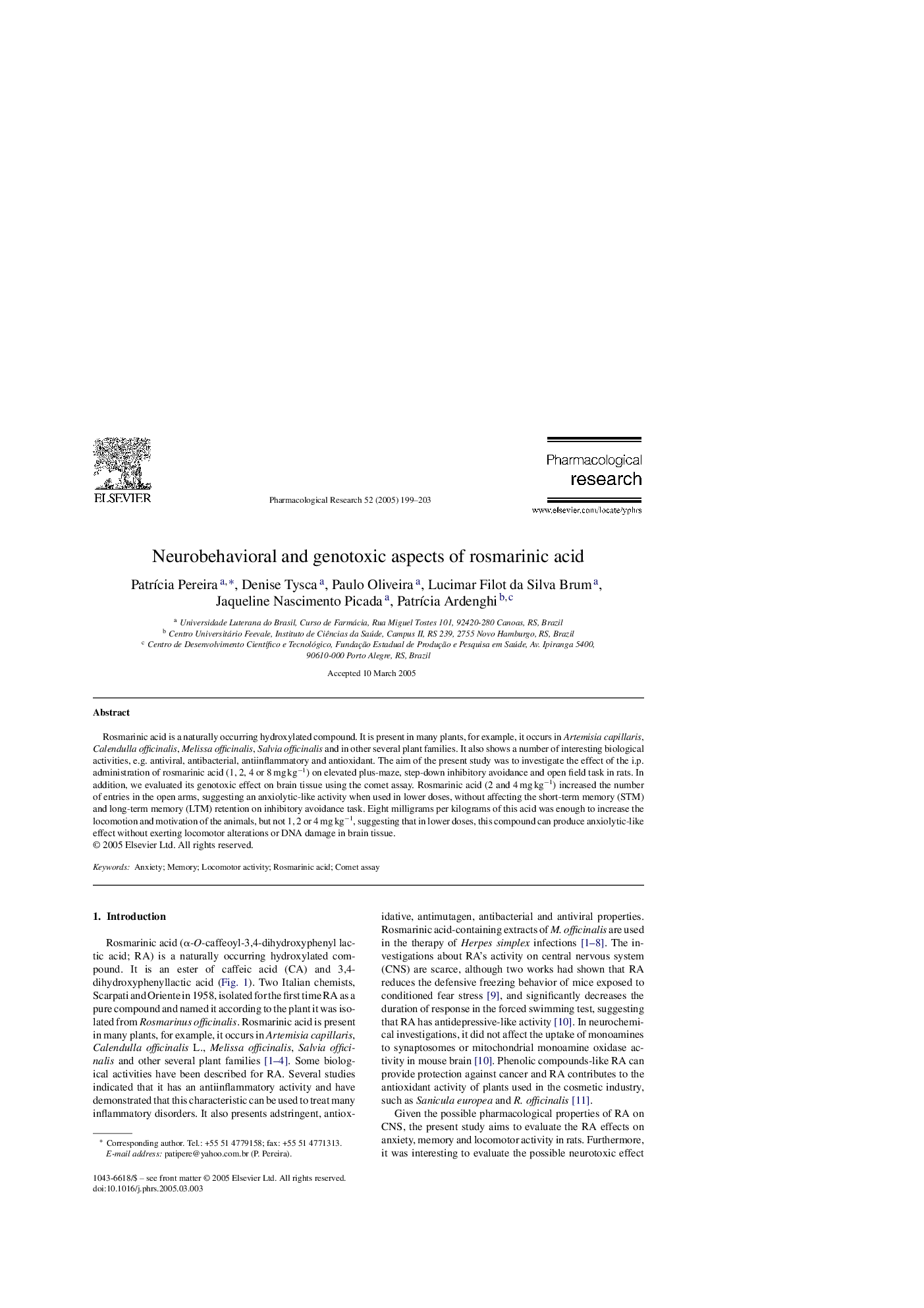| Article ID | Journal | Published Year | Pages | File Type |
|---|---|---|---|---|
| 9015694 | Pharmacological Research | 2005 | 5 Pages |
Abstract
Rosmarinic acid is a naturally occurring hydroxylated compound. It is present in many plants, for example, it occurs in Artemisia capillaris, Calendulla officinalis, Melissa officinalis, Salvia officinalis and in other several plant families. It also shows a number of interesting biological activities, e.g. antiviral, antibacterial, antiinflammatory and antioxidant. The aim of the present study was to investigate the effect of the i.p. administration of rosmarinic acid (1, 2, 4 or 8 mg kgâ1) on elevated plus-maze, step-down inhibitory avoidance and open field task in rats. In addition, we evaluated its genotoxic effect on brain tissue using the comet assay. Rosmarinic acid (2 and 4 mg kgâ1) increased the number of entries in the open arms, suggesting an anxiolytic-like activity when used in lower doses, without affecting the short-term memory (STM) and long-term memory (LTM) retention on inhibitory avoidance task. Eight milligrams per kilograms of this acid was enough to increase the locomotion and motivation of the animals, but not 1, 2 or 4 mg kgâ1, suggesting that in lower doses, this compound can produce anxiolytic-like effect without exerting locomotor alterations or DNA damage in brain tissue.
Related Topics
Health Sciences
Pharmacology, Toxicology and Pharmaceutical Science
Pharmacology
Authors
PatrÃcia Pereira, Denise Tysca, Paulo Oliveira, Lucimar Filot da Silva Brum, Jaqueline Nascimento Picada, PatrÃcia Ardenghi,
